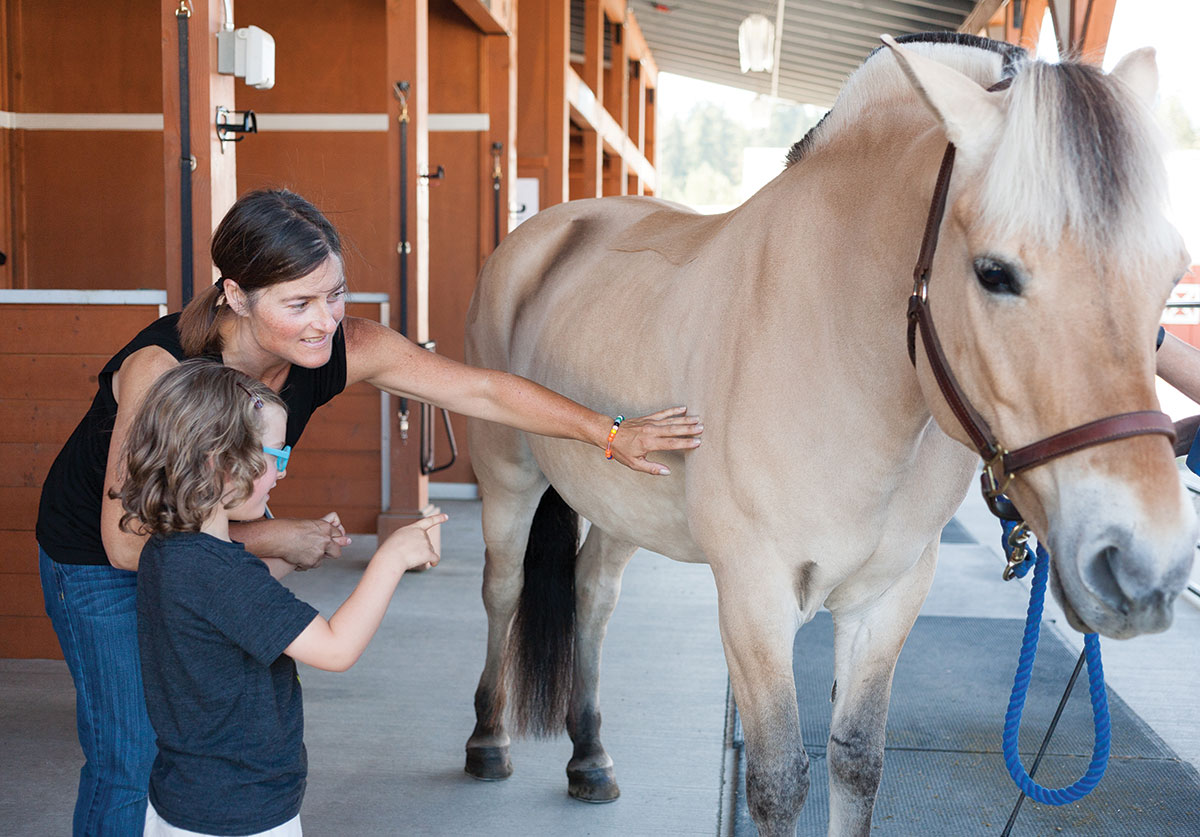Equine Therapy: A Vital Resource for Childhood Healing
Equine therapy, also known as equine-assisted therapy, has emerged as a transformative intervention for children facing a myriad of emotional, psychological, and developmental challenges. By engaging with horses in a therapeutic setting, these young individuals often discover pathways to healing that traditional therapies may not fully encompass. This article will explore the foundational aspects of equine therapy, delve into its multifaceted benefits, and examine the expectations surrounding this innovative therapeutic approach for children.
The Foundations of Equine-Assisted Therapy
Equine-assisted therapy is predicated on the relational dynamics between humans and horses. At its core, it capitalizes on the innate ability of horses to mirror human emotions and behaviors. This aspect creates a unique therapeutic alliance, as horses display a profound sensitivity to the emotional states of individuals. Consequently, interactions with horses can become a reflective and transformative process for children, particularly those grappling with trauma, anxiety, autism spectrum disorders, and depression.
The modality often incorporates a trained therapist who collaborates closely with a certified equine professional. This team approach ensures that therapeutic goals are met while prioritizing both the child’s and the horse’s well-being. Sessions may involve various activities, such as grooming, riding, and even groundwork exercises. These interactions foster communication, develop trust, and enhance social skills in children. Moreover, the physical aspects of equine therapy—such as the movement and tactile stimulation experienced while riding—can also promote sensory integration and body awareness.
The Role of Horses in Healing
The horse-human connection transcends verbal communication, enabling children, especially those who struggle with language or emotional expression, to convey feelings and thoughts through interaction. Horses serve as a non-judgmental mirror, reflecting the child’s emotional state and offering an avenue for expression. This unique relationship can cultivate empathy, responsibility, and confidence in young participants.
Additionally, horses inherently require a delicate balance of assertiveness and gentleness—qualities that children can learn to embody through their interactions. Establishing a bond with a horse often necessitates a level of trust and patience, imparting critical life skills that extend well beyond the therapeutic environment. Through caring for these animals, children often develop a sense of agency and empowerment, essential components for overall mental health.
Benefits of Equine Therapy for Children
Empirical studies and anecdotal evidence from practitioners reveal a plethora of benefits associated with equine therapy for children. Among these, the enhancement of emotional regulation stands out. For children struggling with anxiety, depression, or the aftermath of trauma, equine therapy provides an avenue to learn coping mechanisms—a vital skill in managing their feelings effectively.
Furthermore, this modality significantly improves socialization skills. Many children attending therapy have difficulty forming friendships or engaging in social settings. The group-oriented nature of equine therapy, often involving activities that require teamwork and communication, fosters connections among peers. Consequently, children learn to collaborate, share, and empathize, thereby enhancing their social aptitude.
Another notable advantage of equine therapy is its efficacy in promoting physical wellness. Engaging in horsemanship activities assists in developing fine and gross motor skills, balance, and coordination. The rhythmic movements of horseback riding offer sensory input that can help improve attention spans and promote mindfulness, further enhancing mental well-being.
Addressing Common Misconceptions
Despite its burgeoning popularity, misconceptions regarding equine therapy persist. One prevalent misunderstanding is that it is merely recreational, failing to recognize the rigorous therapeutic protocols in place. While fun is indeed a facet of equine-assisted therapy, the overarching structure is designed to achieve specific therapeutic goals, guided by trained professionals.
Moreover, there’s a tendency to underestimate the commitment required from families engaging in equine therapy. Effective participation often necessitates regular sessions, travel to facilities, and active involvement in the horse’s care. Regular engagement ensures that the benefits are cumulatively realized, as equine therapy is not a quick-fix solution.
Empowering Parenting Through Education
As a component of the therapeutic process, educating parents about the therapy can significantly augment its effectiveness. Parents are pivotal in reinforcing the coping strategies and lessons learned during sessions. By understanding the intricacies of equine therapy, they become partners in their child’s healing journey, fostering a supportive environment that maximizes outcomes.
Moreover, parental education can help manage expectations. Equine therapy is not a panacea; rather, it serves as a complementary intervention within a broader therapeutic framework. Parents should be prepared to engage with various stakeholders, such as mental health professionals and educators, to create a holistic support system for their child.
Adolescents and Transitioning Needs
While equine therapy has profound implications for children, it can also be instrumental in addressing the transitional needs of adolescents. As adolescents contend with identity formation and increasing autonomy, engaging with horses may facilitate critical self-reflection and emotional processing. The therapeutic benefits can ease this tumultuous period by fostering resilience and connection.
The integration of equine therapy within school-based mental health programs further enhances its reach. Initiatives that integrate equine-assisted activities into educational settings allow children and adolescents direct access to therapeutic resources, breaking down barriers typically associated with mental health treatment. Such inclusive approaches underscore the importance of tackling mental health issues within the context of everyday life, thereby reducing stigma and promoting widespread acceptance.
The Future of Equine Therapy in Child Mental Health
As mental health awareness continues to burgeon, the potential for equine therapy to become a mainstream intervention for children is substantial. Investment in research to further understand the physiological and psychological mechanisms at play within these therapeutic interactions can enhance credibility. Improved training programs for professionals in this field can ensure that best practices are maintained, safeguarding both the therapeutic process and the welfare of the horses involved.
Ultimately, the ethos of equine therapy transcends traditional therapeutic modalities, inviting children into a realm where they can heal at their own pace, develop invaluable skills, and cultivate a profound connection with nature. As society increasingly recognizes the intricate relationship between mental well-being and experiential learning, the integration of equine therapy within comprehensive mental health frameworks for children holds immense promise.
